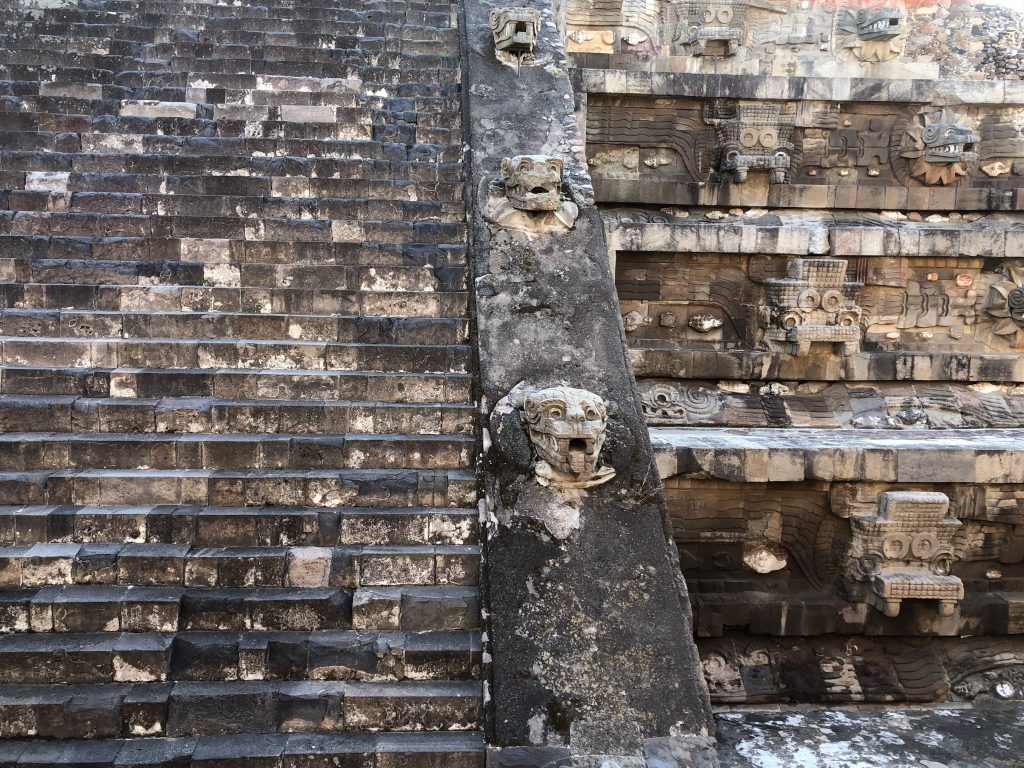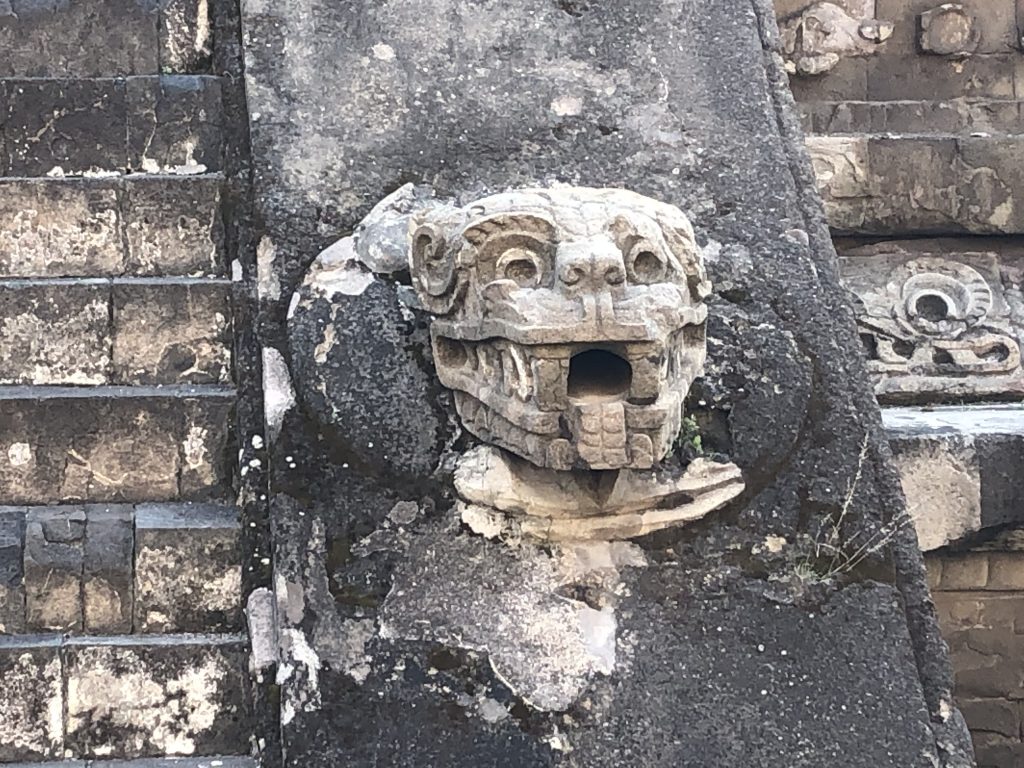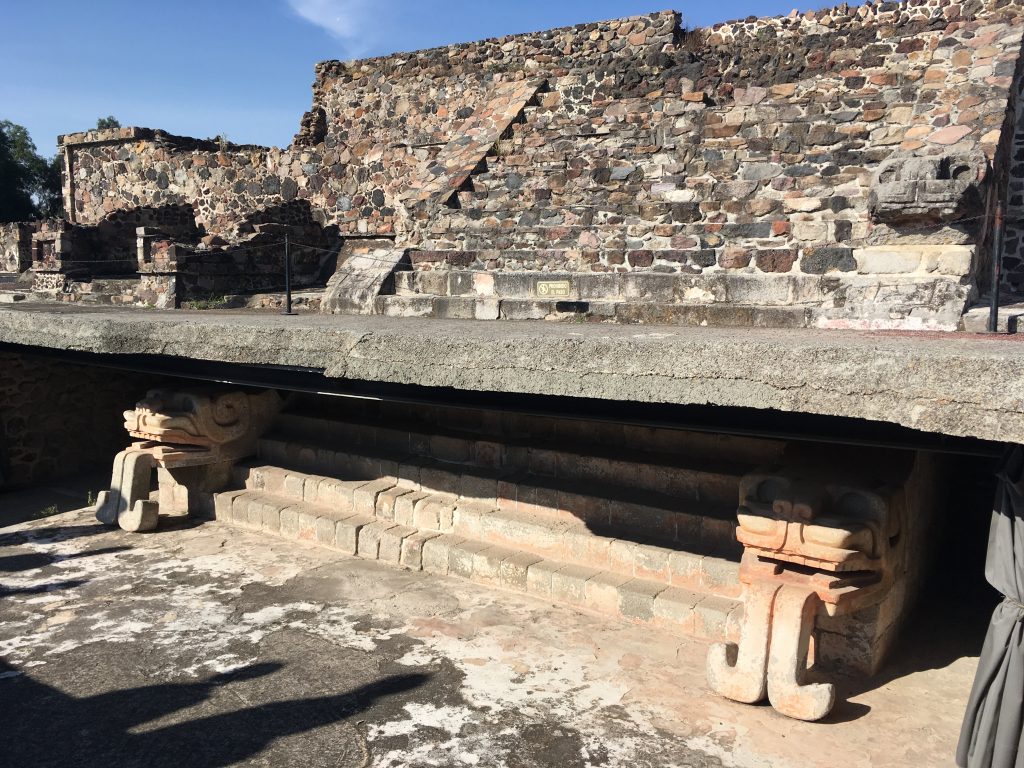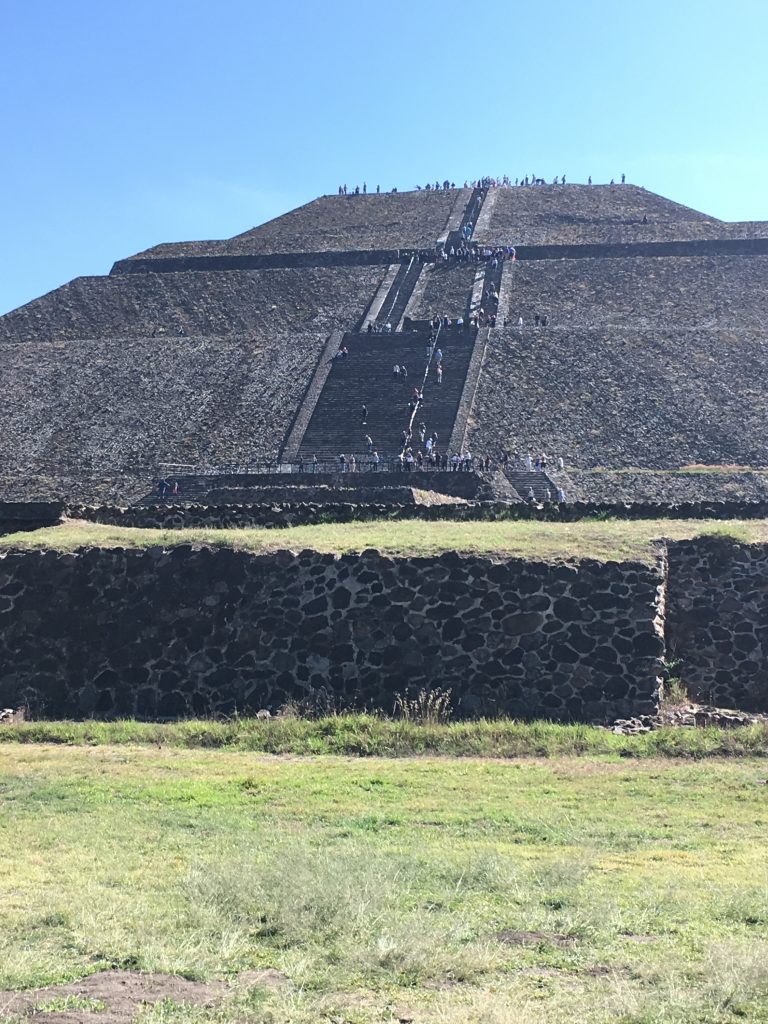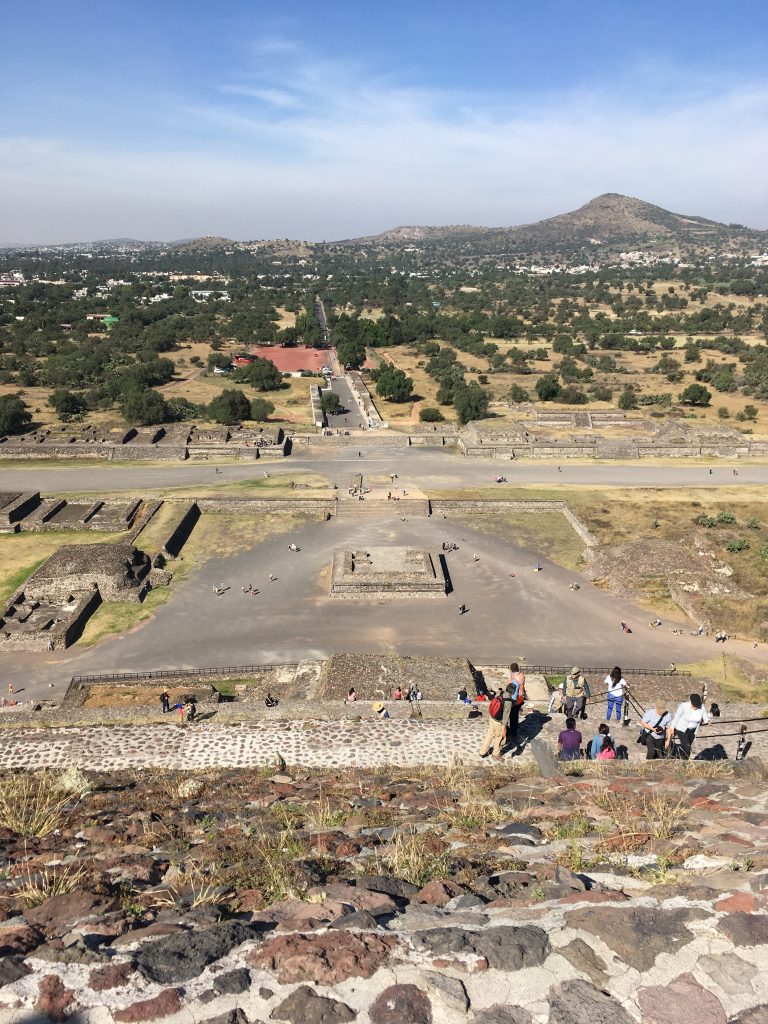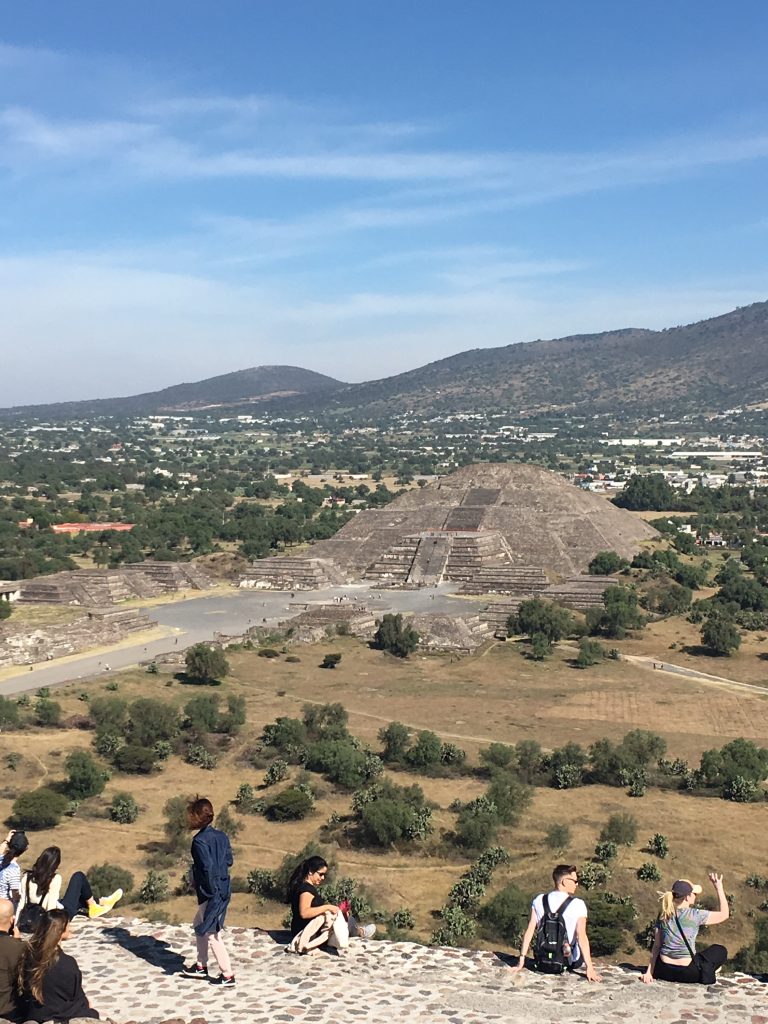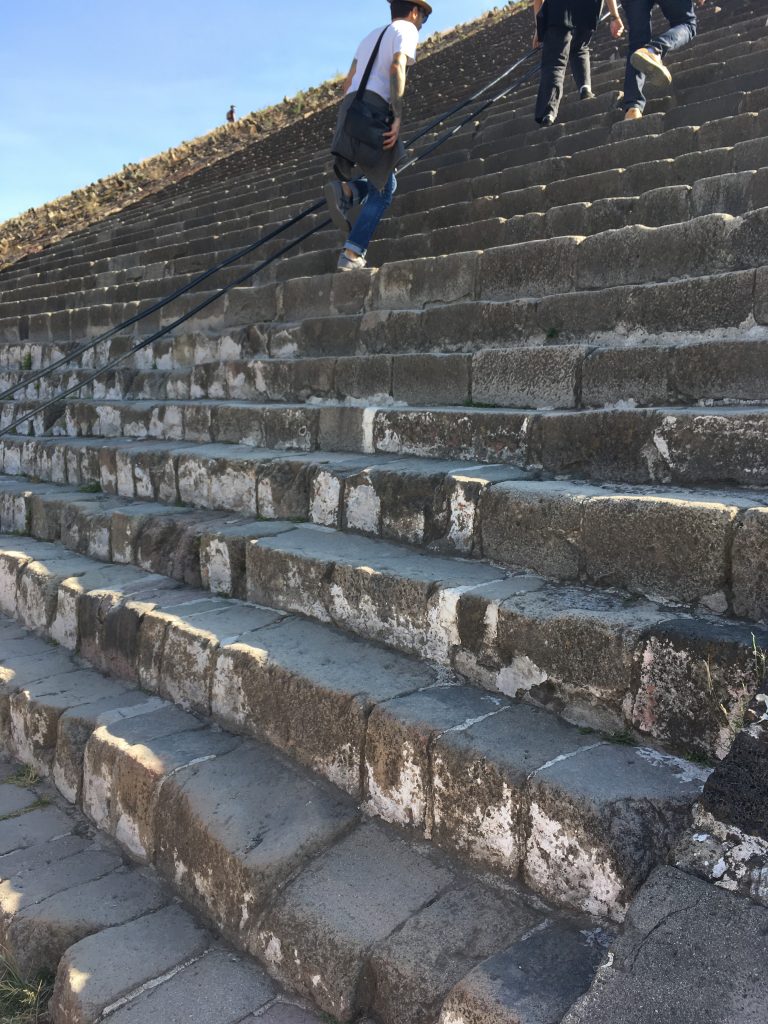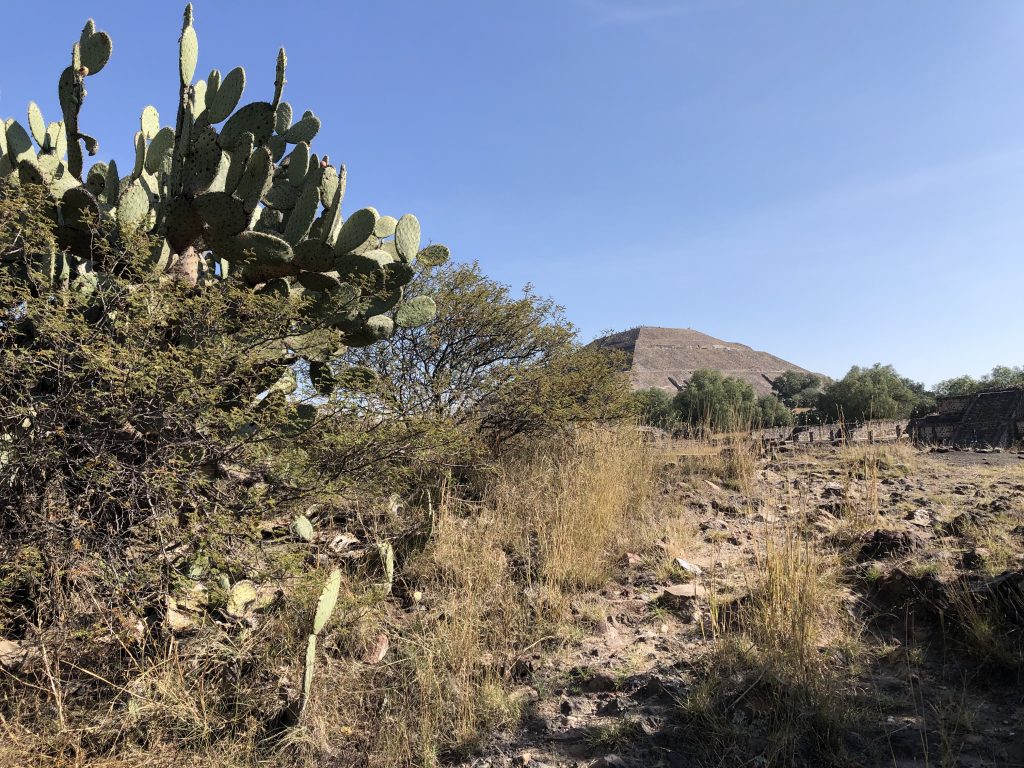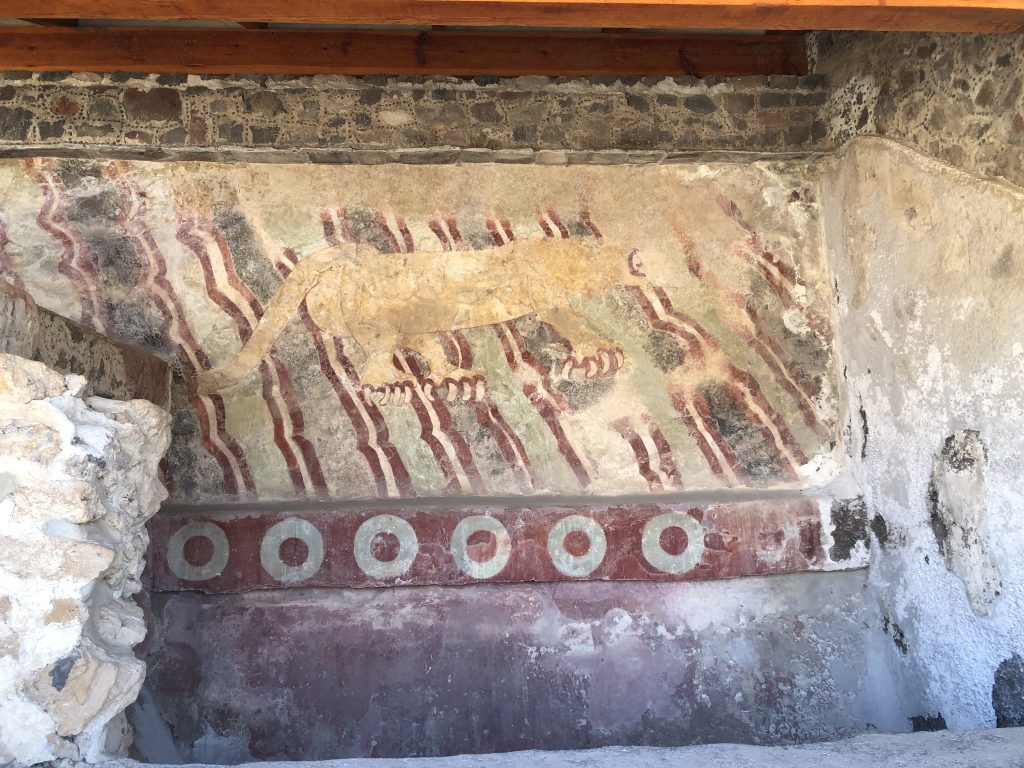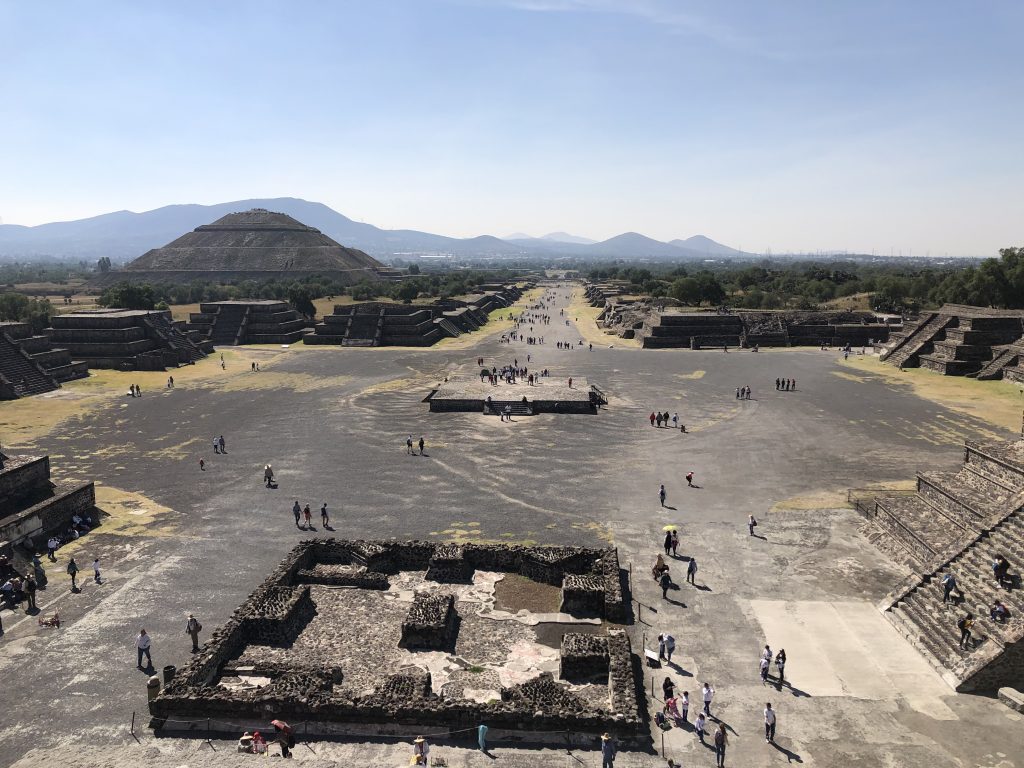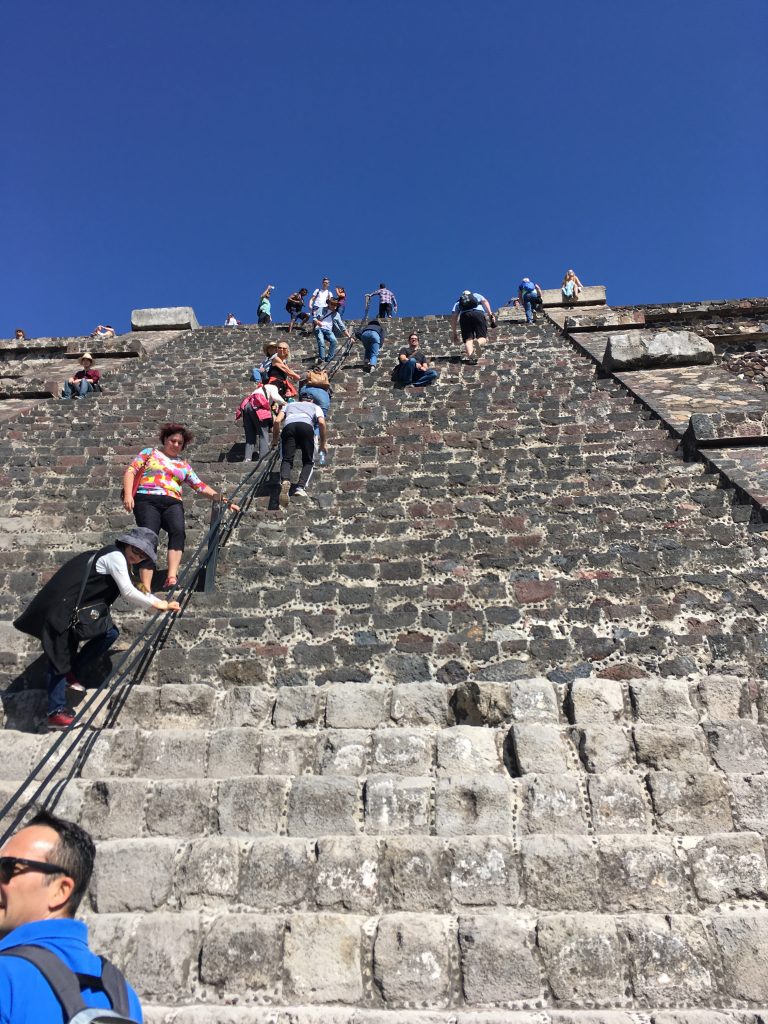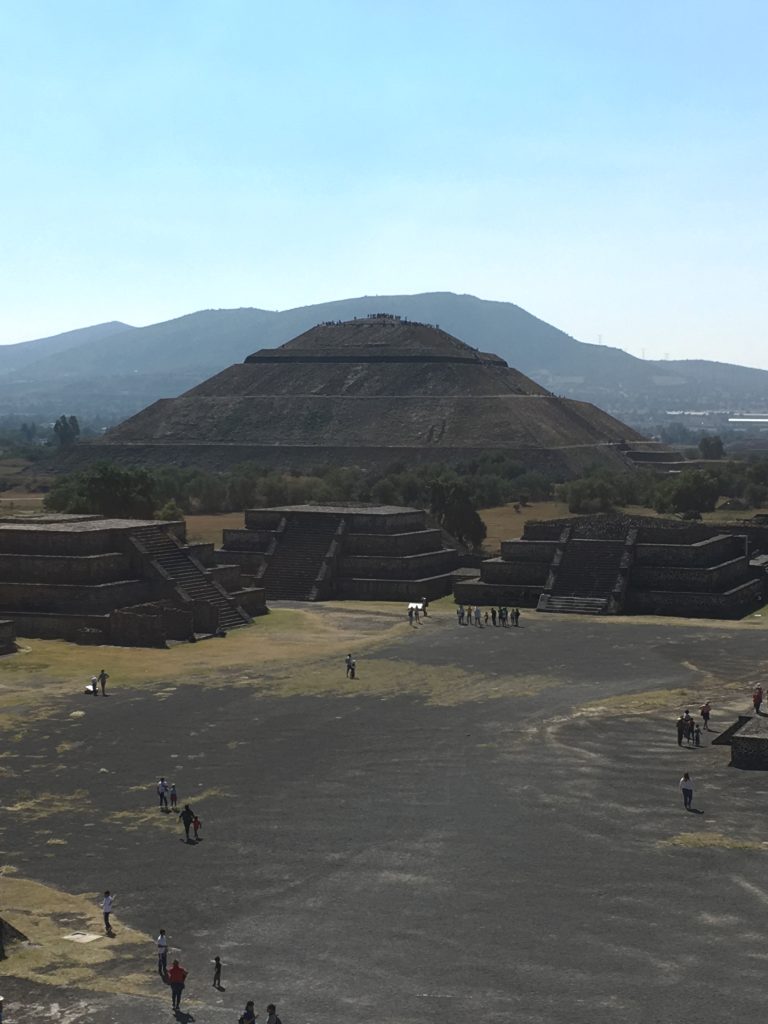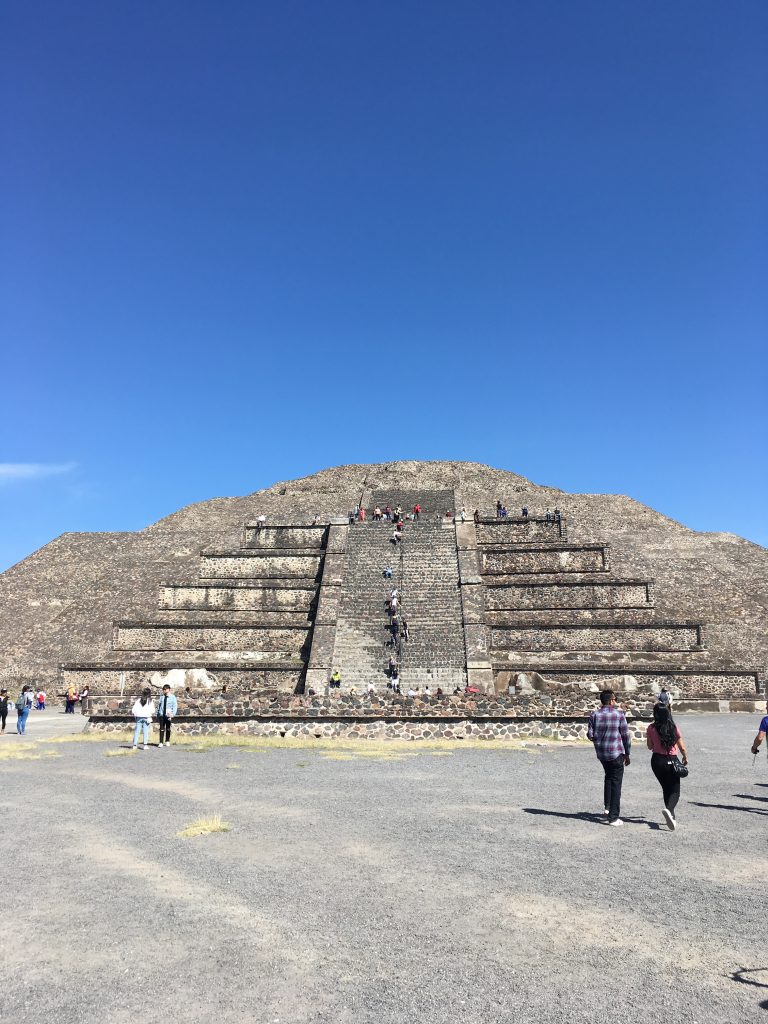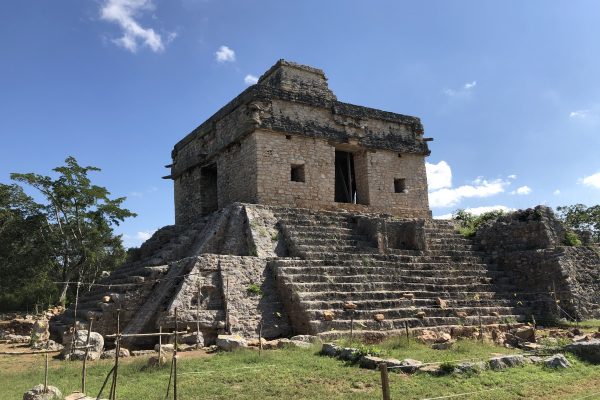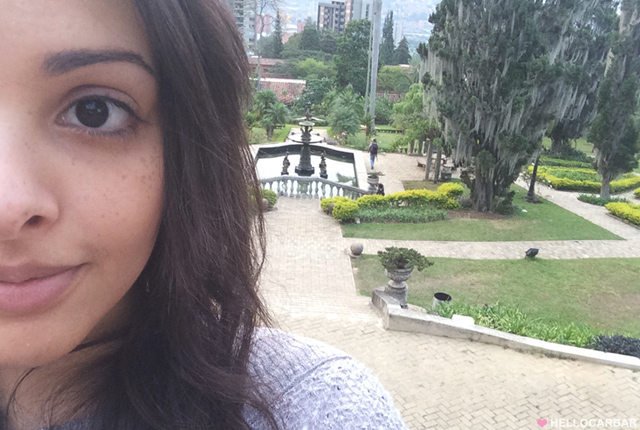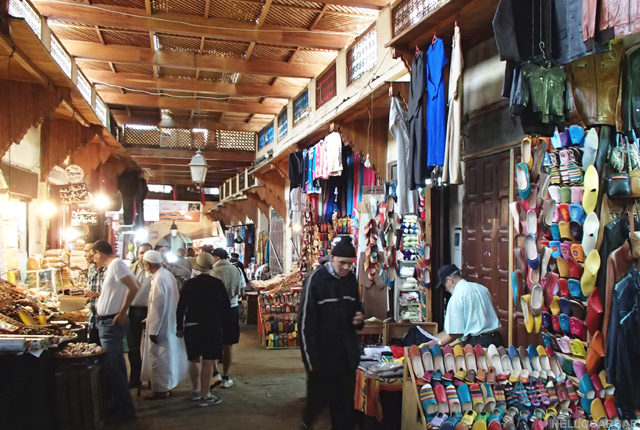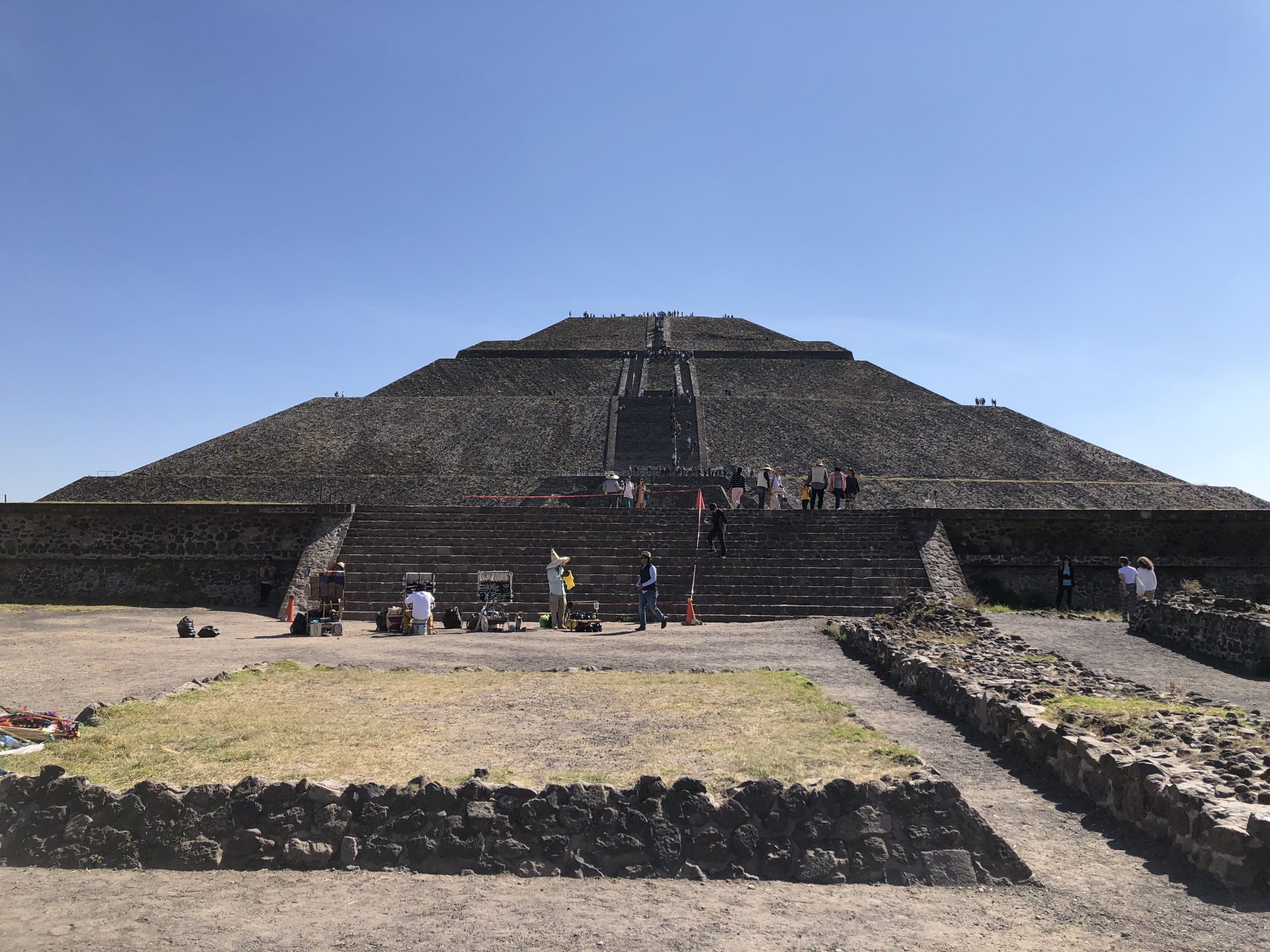
After a couple days of exploring Mexico City we decided to venture out and visit the famous archaeological site Teotihuacan. As it turns out, climbing ancient pyramids and learning all about them made for a pretty sweet day trip.
The rise and fall of Teotihuacan: a mini history lesson
There is a lot of mystery surrounding the origin, culture, and history of Teotihuacan and its people. In fact, we dont even know the city’s original name. The Aztecs discovered the ruins of the city centuries after it had long been abandoned and gave it the name we know now (which roughly translates to “the place where the gods were created”).
What we do know is that Teotihuacan is believed to have been built sometime between 100 and 250 BC, and that it reached a population between 150,000 to 250,000 (no one can seem to agree on a number) at its peak — likely around 400BC. Teotihuacan was a major economic centre in the region, with many merchants from across Mesoamerica coming from far and wide to trade their local goods for obsidian, which was prevalent in the area at the time. It was also a place where many ritual sacrifices were performed, evidenced by the numerous skeletons of people and animals archaeologists later found buried around the temples.
Somewhat mysteriously, centuries after its peak the city was destroyed — burned in either a civil war or invasion.
Even after its destruction, the influence of Teotihuacan can be seen in much of the art, architecture, and religious practices of the Aztecs, Mayans, and other civilisations that followed across Mesoamerica. Iconography including statues and sculptures of the gods (for example, the feathered serpent Quetzalcoatl worshipped by the Aztecs and Mayans) very closely resemble those found in Teotihuacan.
Now the ancient city is one of Mexico’s most famous archaeological sites that, despite being a UNESCO World Heritage site, still allows you to climb the pyramids.
Back to the present day…
If you look north from the main entrance you can see everything you need to see once you arrive at Teotihuacan: the Ciudadela (aka Citadel), the temple of the Feathered Serpent Quetzalcóatl, the Pyramid of the Sun, the Pyramid of the Moon, and in the distance, Cerro Gordo (which means “fat hill” BTW), an extinct volcano. Down the centre is the Avenue of the Dead which connects all these structures together, and probably served as a gathering place for the ancient peoples as they waited for ritual sacrifices to begin or other fun ceremonies along those lines.
The Ciudadela at the south end of the Avenue contains the ruins of the temple of the feathered serpent and some other smaller pyramids and platforms. Probably also for those rituals. We started our climbing adventure with the steps leading to a platform where we could see the temple ruins. Very regular, albeit a bit uneven, steps took us to the top where we could admire the detailed serpent carvings adorning the temple. This was just the warm up.
Back down to the Avenue of the Dead, the pyramids of the Sun and Moon don’t look so bad. From a distance. Once you stand at the bottom though, that first temple looks like an anthill by comparison.
The Pyramid of the Sun is actually the third largest pyramid in the world — right behind Cholula, also in Mexico, and Giza in Egypt. But 75 meters isn’t so bad, right? We were about to find out.
Most of the stairs are easy going, with only a handful of steep spots, and there are handrails and ropes along the way for you to either use as a guide, or clutch in a vice-like grip as if your life depends on it. We saw other travelers doing a bit of both during our climb (but more often than not, the latter. Especially on the way down). Thankfully, the pyramid also has terraces where you can stop for a sip of water or to catch your breath because you’re so out of shape and, uh I mean admire the scenery. Anyway, if you’re able to you should absolutely climb the steps. All two hundred and forty-eight of them. The views from the top are amazing and totally worth it. Just be careful with your jello legs on the way down.
Our next stop was the Moon Pyramid, so off we went and walked until the end of the Avenue where it loomed ahead.
On our way there the way we passed a small alcove inside one of the structures along the Avenue with a preserved mural of a puma, a symbol of power for the people of Teotihuacan. While admiring it I could have sworn we heard a distant roar from the majestic beast in the painting, but it turned out to be one of the locals using a jaguar whistle behind us. (Note there aren’t any pumas or jaguars lurking around there these days, but you will probably hear more than one… or two, or twenty of those whistles while you’re there).
After the puma/jaguar encounter, we continued on to check out the Pyramid of the Moon. While not as high as the Sun pyramid, these steps were twice as steep, and in some places went up to my knees. So it made for a slow trip to the top. Or almost top. You actually can’t climb all the way up as it is roped off, but like the Sun pyramid, it’s absolutely worth the effort for the view.
And there you have it. A couple hours, and a couple hundred steps in Teotihuacan and you really begin to appreciate the amount of work these ancient people — who we still don’t know much about — had spent on the construction of this city so long ago. From the pyramids themselves to all the elaborate carvings around the temples, it’s crazy to think that they were built without any modern-day tools. If you find yourself in Mexico any time soon, you should absolutely check it out and experience it for yourself!
How to get there and other tips
My number one tip: Try to get there early! The site is about 5km from end to end so get ready to do some walking in between each pyramid, and to be under the sun for a few hours. But if you go when the park opens at 8am, you’ll beat the tour bus crowds and the hot afternoon sun. You’ll also avoid the majority of the vendors selling jaguar whistles among other souvenirs that make noise. They come out in droves around the big pyramids, though later in the day, and can be very persistent and distracting when you’re trying to get your education on.
When we were there the entrance fee was 75 pesos per person (this includes a museum inside). If you bring a GoPro or other video recording device they charge you extra. We noticed this is common practice at many historical sites in Mexico. Sorry, I guess this wasn’t so much a tip as a heads up.
Also on the topic of image capturing devices, don’t hold up everyone so you can have a photo shoot in the middle of the stairs. Just…. no. I love Instagram as much as the next person, but don’t be that guy or girl that tells people to wait mid-climb with no way around while you pose for fifty photos in your fur coat. (Yes, this really happened while we were climbing down the Pyramid of the Moon). Sorry I guess that wasn’t a tip either, but a rant. 😅
Another actual tip: If you don’t want to take a tour, Teotihuacan is only an hour’s drive from Mexico City, and easily accessible by bus from the Autobuses del Norte station — look for Autobuses Teotihuacan — or grab an Uber. If you have a group Uber may be a more flexible option as you can leave whenever you like and just pay to get on one of the busses outside the ruins when you’re ready to head back to the city.
If you expect to work up an appetite after all that climbing… I would recommend bringing a snack. Or have a big breakky before leaving for the ruins and then go back to the city to have lunch or dinner. There is a restaurant in a cave behind the exit closest to the Pyramid of the Sun, though. We didn’t end up going (we went to a restaurant about 10 minutes away instead), and heard it was “just okay”. Which made me feel a bit better about where we went since it was also pretty meh… At any rate, if you really like caves, you may want to give it a try.

